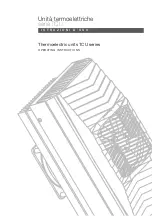Rubicon
2
Manual
Sub Oscillator feeds into the Warp circuit by default. The output of the warped signal appears at
the
WARP OUT
jack.
Because the Warp circuit adds a Tri State Pulse to the
X
waveform (if the Warp knob is turned
clockwise), or subtracts a Tri State Pulse from the
X
waveform (if the Warp knob is turned
counterclockwise), it has the effect of “chopping up” the
X
waveform. Self-patching Rubicon
2
waveshapes into the
X IN
jack results in some particularly interesting Warp shapes. Try a sine
wave!
Tremendous sonic variation is possible by varying numerous parameters that directly affect the
Warp output, such as the PULSE TYPE switch, the PULSE WIDTH and the WARP value.
Modulating both the WARP and PULSE WIDTH provides sounds similar to scanning through
wavetables.
Because the Warp circuit works by summing two different waveforms together, it’s possible for
the WARP output to be “hotter” than the 10V p-p output of the other Rubicon
2
waveform outputs.
Sometimes this might be just what you want. Or, if needed, you can attenuate the WARP OUT
waveform using an external module. However, if you wish to limit the WARP OUT’s
peak-to-peak voltage within the Rubicon
2
, you can use its Squish circuit to do so.
Page 24


















